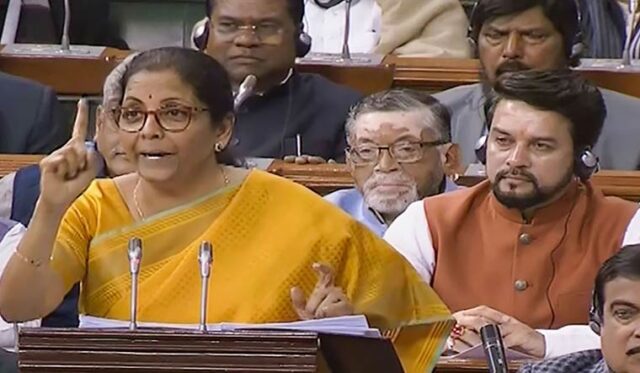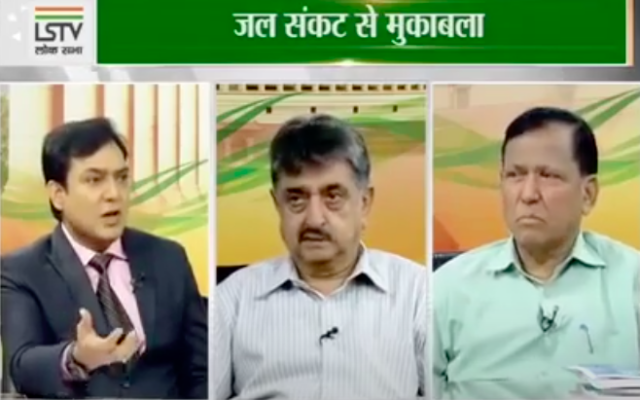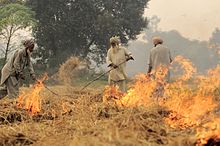“Oh, you can’t help that,” said the (Cheshire) cat. ‘We’re all mad here.”
The way out of mental illness
Arguably the way to resolve a problem is to see what is holding back the problem from finding a solution. If mental suffering and its associated “illness” be seen as a problem then possibly there has to be a way out. Does the way come via psychiatric medication or does it come via some other pathway(s)?
When I recovered from bipolar disorder and stayed “sane” for long periods of time, one of the first acts I performed was try unearthing why or how I had recovered. But when others, predominantly caregivers of other similar “patients”, started calling me an exception it became a challenge for me to understand if I could recover, why were others not doing so. I got this opportunity via doctoral research in 2016. I took the challenge up to not rebuild my life, but find a way out for others! (no wonder the “mad” are called so!).
Entering the psychiatric maze in 1992, by the time I quit the patient role it was 2010. I spent another dozen years understanding (1) my own recovery (2) recovery from psychosis (schizophrenia and bipolar disorder) more generally, all via research done alone at home for years and years.
Finally when my book came out last year three decades had passed. Not the easiest time of my life, a time spent in grief and suffering, thereafter pondering over intractable issues of living, listening to narratives both in research and counseling.
At the end of this span today I can say that nobody’s mental health will get affected if everyone had opportunities and managed to do what they ardently want to. And, significant others who would support and believe in them getting there, instead of imposing their ideas on them, as parents sometimes tend to. The book is a bit of an academic analysis, but for someone interested the publisher offers 50 odd pages to read for free, from this link. There is a button that says “preview PDF” to the top right of the page, if seen on a computer, as I am doing right now. Once you click it it downloads those pages into your device.
Hope it will interest you to engage with some of these ideas. What is true for psychosis is valid for most mental health issues, as schizophrenia and bipolar disorder are among the more unmanageable of issues, even for psychiatry. If people can recover from these, they can pretty much heal their minds from most other things as well. Provided, they will do what it takes to recover, which itself is not child’s play!

The book is available here to buy from the distributor.
In the video appended at the end of this post I am in a discussion with filmmaker Aparna Sanyal, co-founder of a mental health organization, called THE RED DOOR. This was in New Delhi, at the India Habitat Center on 26th August 2023.
LokSabhaTV- Nirmala Sitharaman- Budget Provisions for Jal Shakti

A Panel Discussion was held on Lok Sabha TV at 1 PM and 4 PM on the 24th of January 2020 to discuss provisions for Water in Ms. Nirmala Sitaraman’s Budget Session in Lok Sabha due on 1st February. The Program was anchored by Parakram Singh Shekhawat. The panelists were Arun Tiwari, Manohar Khushalani and Himanshu Thakkar. They all went into their expectations from the budget with respect to Budget Provisions for Jal Shakti – Water.
The anchor began the discussion with a small introduction of the Ministry of water resources (Jal Shakti Mantraley), Mr. Gajendra Singh Shekhawat, the troubled state of water quality and availability through the country, and its ever arising complications. Mr. Arun Tiwari elaborated on our lack of efforts in successfully harvesting rainwater and sustaining groundwater levels, highlighting the lack of regulations surrounding these harvesting methods. The importance of sustainability was highlighted as well unless groundwater is recharged, regulated and the focus needs to be shifted to Sustainability.
The Ministry of Drinking Water and Sanitation, Ministry of Water Resources and Ganga Rejuvenation have been merged into the Jal Shakti Ministry under the second term of the Modi government and the Jal Shakti Ministry was allocated Rs 28,261 Crore, an 8% increase. A 10 pointer vision for the next decade was listed out by the Finance Minister Nirmala Sitharaman. She elaborated that the Jal Shakti Ministry will manage the country’s water resources and water supply in an integrated holistic manner, and will work towards supplying all rural households with water supply by 2024. In the LSTV discussion, Manohar brought forward a set of important points such as the minimal increase in the budget allocated, the unsanitary sewage system, and lack of stormwater drains. He also insisted that along with budget allocation, our national lakes need to be taken care of efficiently and resurrected, and the need for the development of rural handicrafts and the need for a River Basin Authority, for the systematic distribution of water.
The Atal Bhujal Yojna, is a scheme, also known as ‘Atal Jal’ will promote panchayat-led groundwater management and behavioral change with a primary focus on demand-side management. The scheme is aimed at
- doubling farmers’ incomes,
- promoting participatory groundwater management,
- improving water use efficiency on a mass scale,
- improving cropping pattern and
- promoting efficient and equitable use of groundwater resources and
- behavioral change at the community level.
Official estimates state that over INR 9 crores (90 million) toilets were constructed from 2014 when the Swacch Bharat Mission was launched under the Modi government as one of its flagship schemes. Yet, a government survey in 2017 showed that 6 out of 10 toilets built under the Swacch Bharat Mission did not have water supply, and were hence unusable.
The chemical fertilizer farming is allocated INR 80,000crores, while the green revolution farmers are allotted INR12,000crores but the Organic manure farming is allocated only INR 2 Crore, Manohar Khushalani pointed out, the obvious lack of financial support to organic farmers led to Cancer and other diseases in the cities of Punjab and Harayana, he insisted on the importance of WaterShed Management, an initiative taken by Anna Hazare previously.
The discussion shed light upon various important aspects of Budget allocation for water conservation and also examined the various areas where more efforts are required for sustainability.
You can watch the informative debate here.
You will find more details on the next debate on LSTV on the topic of Atal Bhujal Yojna, Please find the entire debate here.
Niti Aayog’s Report on Water Scarcity in India

BTP Students: Sejal Kumar / Aysha Fazilath / Rahul Patwardhan / Vyshakh Dharan
Prof. Manohar Khushalani appeared Live, as a Panelist in the Lok Sabha TV Program INSIGHT on, Monday, 18th June 2018 at 1 pm and again at 4 pm. The discussions were on Niti Aayog’s report, titled ‘Composite Water Management Index’ (CWMI). An intense and productive discussion was held on issues confronting the nation concerning the water crisis in India and the world. Dr. T. Haque, from Niti Ayog, was Khushalani’s co-panelist. Pratibimb Sharma was the Anchor of the Program
According to Niti Aayog’s report on water scarcity published in 2018, India is going through the worst water crisis situation it has ever seen. More than sixty crores of its population are facing this issue and around two lakh die every year. This report discusses the plans made by the government to curb this issue and the position they have reached to achieve the goal in the predicted timeline. This has been done in order to make a competitive framework between the states to keep a check on where they stand and what they can do to get to a better situation.
Twenty-one cities including Indore, Bhopal, and NDMC area have switched to the cleaner city lists after constant efforts. According to the rankings, 5 states – Gujarat, Madhya Pradesh, Andhra Pradesh, Karnataka, and Maharashtra are working the most towards fixing the situation. Their practices have been mentioned in the report as an inspiration for other states to see and apply. These ranks have been given on the basis of 9 key areas, for example, the state with best groundwater plans has been given 15 points, improvement in lakes and other water bodies is given 5 points, and so on.
The discussion takes us through the gaps between what the report discusses and the major issues that need to be tackled. The report informs us about what the states have done by far but will this help to intercept the problems that lie in front of us in time?
Prof. Manohar Khushalani then adds that the country is receiving the required amount of rainwater, but the problem is that it is not managed well by the government and the citizens. Reasons being lack of awareness among citizens, constant fighting between states, and inability or lack of knowledge to conserve rainwater. We are a lucky nation to have this huge amount of rainfalls spread across the country but we lack proper planning. One holistic approach is needed towards making and managing proper schemes.
According to Dr. T Haque, awareness has increased amongst citizens in the civil society and they are taking steps to increase the water harvesting practices but facts say that leakages at houses contribute to a large percentage of water being wasted.
Khushalani also talks about the 70 percent water being contaminated as mentioned in the report. It is very important that the water that goes below the ground is being filtered. The water below the ground is connected. So, it is very important to monitor water harvesting as well.
Talking about the utilization of water among farmers, when they were given the free electricity incentive they started using groundwater more than required. Now, when they are asked to use less water or practice micro-irrigation to grow their crops, they have no incentive to be drawn to this new practice. This is a very big area where the government can focus on. Even for the citizens, this is a big question that can come up, what’s in it for me?
There has been a lack of vision despite the efforts taken by the government. The state and the central government needs to be aligned to make better decisions. It is very much possible as some of the decisions taken in the past have proved to be very fruitful. The report has helped in creating awareness in terms of where the states stands and the positive impact of this will be seen in the coming future. This report with the inputs of people will help create a better understanding of what more needs to be done in order to solve the crisis at hand.
For more information please visit the link : https://youtu.be/hohvMVZvPcQ
Women taking charge of a very messy world | Swasti Rao Chandela


On the left : Prof Carmen Reinhart, on the right : Prof Gita Gopinath
Two of the most fundamental institutions of neo liberal economics – the IMF ( International Monetary Fund) and the World Bank have women as their chief economists now . Our own Prof Gita Gopinath (department of economics , Harvard) is at the IMF and just about some hours ago, Prof Carmen Reinhart from Harvard Kennedy School is appointed the chief economist at the World Bank. I have referred to Prof Reinhardt’s work on global financial crises for my own lectures . Her key focus being the problematic relationship between banking, currency, lending bubble and finally the crisis . A relationship that works uniformly through all neoliberal economic logic . Also , recently I had googled her latest work while preparing for the China lecture series and had come across her forecast for the Chinese bubble bursting with a strong insight into the fragility of the Chinese economic model .
Clearly, with the way the world is sinking into the biggest financial crisis as the post corona world order sets in , it is scholars like her whose work will rule the roost . I am not an economist by profession but whatever I have studied and understood I find the very logic of neoliberal economics faulty . We need a combination economic model. However , this news made my heart swell with pride again. More power to such women of substance .
Water Action Plan 2020
This OneVorld video discusses a plan for the implementation of the conservation and management of water resources in India.
Proposed By: GN Kathpalia and Rakesh Kapoor
Timeline :
- The first national policy was created in September 1987
- Updated in April 1, 2002, by National Water Resources Council
- This was followed by an update in 2012
What is the Water Action Policy 2020 ? Is there a need for this alternative ? How do we conserve, manage, save, maintain and utilise these resources ? How will this plan help in decision making by the authorities ?
So, what is the Water Action Policy ?
Water Resources in India, for now, is being managed by central and state government mostly. The plan suggests that there should be a shift in the work division at the level of local communities also. This requires the setting up of different community organizations like Watershed Management Associations(WMAs), Water Users Association (WUAs), JFM, RWAs.
Key concepts in the plan for water conservation and management are drinking and domestic use of water, water pollution, watershed management, flood and drainage management, underground water conservation, irrigation, cultivation, hydropower, industrial and thermal power management, sectoral allocation, navigation, demand management, and resources assessment.
Implementation –
- Partnership with communities in Water Resource Management
- Changes in the institutional structure
- Implementation of water-shed projects
- Legal changes
- Project implementation
- Financing projects and water service charges
- Maintenance and modernisation
- Action program and important implementation aspects
- Research and training
BTP Students: Sejal Kumar / Aysha Fazilath / Rahul Patwardhan / Vyshakh Dharan
Video Input: Utsav Rohilla / Nitin Yadav / Aditya Diundi
Stubble Burning Fact and Fiction
Now that the harvesting season is around the corner it’s important to examine the issue of stubble burning. There’s a tremendous amount of misconception and misinformation floating around on Stubble Burning. Common people and Media squarely blame the farmers. But gleaning through Wikipedia as a proof of what one has been saying, is that it’s a world wide phenomenon. The pollution due to Stubble Burning is not as acute as is made out to be. Also, hold your breath, there are some beneficial effects. This is not to recommend Stubble Burning at all, but to introspect as well, think. Can one month of this activity cause pollution all the year round? Who are the other culprits hiding behind the farmers backs. What are the solutions?
According to Wikipedia:
Stubble burning is intentionally setting fire to the straw stubble that remains after grains, like paddy, wheat, etc., have been harvested. The practice was widespread until the 1990s, when governments increasingly restricted its use.
The burning of stubble, contrasted with alternatives such as ploughing the stubble back into the ground or collecting it for industrial uses, has a number of consequences and effects on the environment.
Generally helpful effects
- Kills slugs and other pests.
- Can reduce nitrogen tie-up.
Generally harmful effects
- Loss of nutrients
- Pollution from smoke
- Damage to electrical and electronic equipment from floating threads of conducting waste
- Risk of fires spreading out of control
There is a perception that stubble burning contributes to atmospheric CO2. However carbon dioxide releases are only slightly greater than those from natural decomposition.
Attitudes to stubble burning
- Stubble burning has been effectively prohibited since 1993 in England and Wales. A perceived increase in blackgrass, and particularly herbicide resistant blackgrass, has led to a campaign by some arable farmers for its return.
- In Australia stubble burning is “not the preferred option for the majority of farmers” but is permitted and recommended in some circumstances. Farmers are advised to rake and burn windrows, and leave a fire break of 3 metres around any burn off.
- In the The burning of stubble, contrasted with alternatives such as ploughing the stubble back into the ground or collecting it for industrial uses, has a number of consequences and effects on the environment.[1]
Generally helpful effects Edit
Kills slugs and other pests.
Can reduce nitrogen tie-up.
Generally harmful effects Edit
Loss of nutrients
Pollution from smoke
Damage to electrical and electronic equipment from floating threads of conducting waste
Risk of fires spreading out of control
There is a perception that stubble burning contributes to atmospheric CO2. However carbon dioxide releases are only slightly greater than those from natural decomposition.Attitudes to stubble burning Edit
Stubble burning has been effectively prohibited since 1993 in England and Wales. A perceived increase in blackgrass, and particularly herbicide resistant blackgrass, has led to a campaign by some arable farmers for its return.
In Australia stubble burning is “not the preferred option for the majority of farmers” but is permitted and recommended in some circumstances. Farmers are advised to rake and burn windrows, and leave a fire break of 3 metres around any burn off. - In the United States, fires are fairly common in mid-western states, but some states regulate the practice, e.g.
In the European Union, the Common Agricultural Policy strongly discourages stubble burning.
In China, there is a government ban on stubble burning; however the practice remains fairly common.
In northern India, despite a ban by the Punjab Pollution Control Board, stubble burning is still practiced. Authorities are starting to enforce this ban more proactively.
Stubble burning is allowed by permit in some Canadian provinces, including Manitoba where 5% of farmers were estimated to do it in 2007.
Stubble burning in IndiaBurning of rice residues after harvest, to quickly prepare the land for wheat planting, around Sangrur, Punjab, India
Stubble burning in Punjab and Haryana in northwest India has been cited as a major cause of air pollution in Delhi. In late September and October each year, farmers mainly in those two states burn an estimated 35 million tons of crop waste from their paddy fields after harvesting, as a low-cost straw-disposal practice to reduce the turnaround time between harvesting and sowing for the second (winter) crop. Smoke from this burning produces a cloud of particulates visible from space, and has produced a “toxic cloud” in New Delhi, resulting in declarations of an air-pollution emergency.[16] For this, the NGT (National Green Tribunal) slapped a fine of Rs. 2,00,000 on the Delhi Government for not filing an action plan providing incentives and infrastructural assistance to farmers to stop them from burning crop residue to prevent air pollution.Although harvesters are available such as the Indian-manufactured “Happy Seeder” that shred the crop residues into small pieces and uniformly spread them across the field, as an alternative to burning the crops, farmers complain that the cost of these machines is prohibitive compared to burning the fields, fires are fairly common in mid-western states, but some states regulate the practice, e.g..
- In the European Union, the Common Agricultural Policy strongly discourages stubble burning.
- In China, there is a government ban on stubble burning; however the practice remains fairly common.
- In northern India, despite a ban by the Punjab Pollution Control Board, stubble burning is still practiced. Authorities are starting to enforce this ban more proactively.
- Stubble burning is allowed by permit in some Canadian provinces, including Manitoba where 5% of farmers were estimated to do it in 2007.
Stubble burning in India
Stubble burning in Punjab and Haryana in northwest India has been cited as a major cause of air pollution in Delhi. In late September and October each year, farmers mainly in those two states burn an estimated 35 million tons of crop waste from their paddy fields after harvesting, as a low-cost straw-disposal practice to reduce the turnaround time between harvesting and sowing for the second (winter) crop. Smoke from this burning produces a cloud of particulates visible from space, and has produced a “toxic cloud” in New Delhi, resulting in declarations of an air-pollution emergency. For this, the NGT (National Green Tribunal) slapped a fine of Rs. 2,00,000on the Delhi Government for not filing an action plan providing incentives and infrastructural assistance to farmers to stop them from burning crop residue to prevent air pollution.
Although harvesters are available such as the Indian-manufactured “Happy Seeder” that shred the crop residues into small pieces and uniformly spread them across the field, as an alternative to burning the crops, farmers complain that the cost of these machines is prohibitive compared to burning the fields
Don’t Mess With Modi in Texas / New York Times

An Oped by a New York Times columnist, Roger Cohen, suggests a change of outlook and an attempt to balance the anti India rehetoric that has been bane of this News Paper so far, on the Kashmir issue.
Talking about Imran Khan, Cohen is very scathing, he says in his Op. Ed, “Suggesting Modi has sympathy for the Third Reich, comparing him to a Fascist leader and stating that he may commit “genocide,” is to protest too much. Raising the possibility of nuclear war is reckless. All this suggests his bluff has been called.”
“If Pakistan is so concerned about Nazi Germany”, Cohen asks, “it might begin by recognizing the State of Israel. Whether Pakistan really wants a solution in Kashmir, the region that justifies its bloated military budget, and whether it can ever transparently demonstrate that its intelligence services have stopped finding uses for radical Islamism in its various violent forms, remain open questions”
Expressing concern about Pakistan’s Western neighbor, He postulates, “They are important questions for the United States, as it contemplates a military withdrawal from Afghanistan. A quandary for Trump now will be how to secure Pakistani support, rather than suffer an incensed Pakistan’s sabotage, if he moves forward with his promise to bring American troops home.”
“Modi will not turn back from his elimination of Kashmir’s autonomy. That phase of Indian history is over. Trump and Modi are both forceful, media-savvy politicians. But they are not alike. Modi, a self-made man from a poor family, is measured, ascetic, not driven by impulse. Trump was born on third base. He’s erratic, guided by the devouring needs of his ego. I’d bet on Modi to transform India, all of it, including the newly integrated Kashmir region.”
Financial Trouble at an Iconic American Hydropower Giant
Can Hydropower compete financially with Solar energy. This podcast says it all
Watch “Bury Kitchen Scraps Directly in Garden and This Happens” on YouTube
How to create live compost in your Kitchen Garden. Please watch this video and take note of the Dos and Don’ts to get perfect nutrients for your soil.
